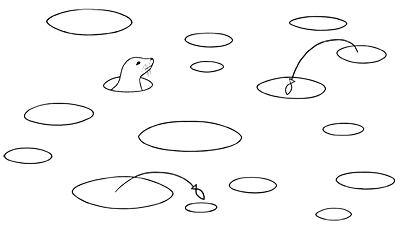Business Model Generation: Revenue streams
E-commerce
Deliver traditional products through online channels

How: Remove costs associated with running a physical branch infrastructure by selling your products via online channels.
Why: Customers typically benefit from higher availability and convenience, while the business is able to integrate sales and distribution.
E-commerce refers to the buying and selling of products and services through electronic systems, such as the internet. This business model has transformed the way we shop by allowing customers to search for and purchase goods and services online, compare offers, and save time and money on travel costs and intermediaries. Companies also benefit from being able to make their products and services easily searchable and accessible to a global customer base, while reducing the need for physical retail premises and traditional forms of advertising.
Challenges and Opportunities of Selling Virtual Goods
One challenge of selling virtual goods is that buyers are unable to test or evaluate them before making a purchase. This disadvantage can be offset by clearly communicating the benefits of the product and making it easily available and accessible. Customers may also appreciate increased market transparency, such as the ability to read reviews from other customers. On the other hand, selling virtual goods online allows for a larger selection of products without overwhelming the customer, as they can easily search, filter, and navigate through the offerings.
Where did the E-commerce business model pattern originate from?
E-commerce dates back to the electronic transmission of messages during the Berlin Airlift in the late 1940s. However, it was the development of electronic data interchange (EDI) in the 1960s that laid the foundation for the e-commerce of today.
While initially only accessible to businesses due to high costs, the advent of the internet in the 1990s served as a catalyst for the democratization of e-commerce, allowing private customers to participate as well. In recent years, traditional e-commerce channels have been increasingly leveraging the full capabilities of the internet, further blurring the lines between online and offline commerce.
Applying the E-commerce business model
E-commerce, much like digitization, is a realm of vast potential. It has revolutionized the way we shop, enabling nearly any business-to-consumer transaction to take place online. While the advantages of traditional online marketing and transaction management are evident, e-commerce also holds untapped potential in the areas of big data and the utilization of search and transaction data.
While concerns about data sharing persist in western society, the commercialization of this information will continue as long as it provides value to customers. In the realm of business-to-business transactions, e-commerce has demonstrated its ability to improve cost efficiency and reduce transaction costs. Overall, the potential of e-commerce is vast and continues to be explored and exploited.
Activities include sendingn personalized advertisements and recommendations to customers as the company can reach a global customer base at minimal additional cost. The E-commerce business model can also serve as a complementary sales channel through which the benefits of digitized products can be fully realized, such as rapid, integrated sales processes for digital music, films, and software.
Real life E-commerce examples
Etsy
Focusing on handmade or vintage items and craft supplies, Etsy is the biggest worldwide e-commerce player in its category.
Alibaba
Hosting the largest business-to-business marketplace in the world, Alibaba connects businesses of all sizes.
Amazon
This online retail giant, founded by Jeff Bezos in 1994, quickly made a name for itself by offering a wider selection of books than traditional brick-and-mortar stores. As the company expanded and grew in popularity, it began introducing new product lines and developed integrated ordering and distribution systems, which it later made available to other retailers through its online platform.
ASOS
A British online retail store specializing in fashion and beauty products, ASOS utilizes an easy-to-use e-commerce platform on its website to connect with millions of active customers in over 160 countries. By eliminating subsidiary branch infrastructure and intermediaries, the company is able to offer excellent customer service at competitive prices.
Zappos
America’s largest online footwear retailer, Zappos offers a wide range of products including clothing, accessories, sports goods, eyewear, and home goods through its e-commerce website. Now linked with Amazon, the company aims to provide a convenient online shopping experience with speedy delivery by streamlining the process and eliminating intermediary costs through in-house warehousing and distribution.
Trigger Questions
- How can you transfer or enhance retail selling propositions as customers encounter them online?
- Will selling your products online help create additional value for your customers or help reduce overall costs?
- Can the implementation of e-commerce serve to enhance value for our customers or reduce expenses?
- Will transitioning to an online platform enhance our distinctive selling proposition, or will it diminish our competitive edge?
Proven business models that have driven success for global leaders across industries. Rethink how your business can create, deliver, and capture value.
Get your deck!Related plays
- Business Model Navigator by Karolin Frankenberger and Oliver Gassmann

